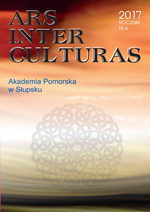ZNACZENIE BAJKI MIĘDZYKULTUROWEJ W ROZWOJU DZIECI W MŁODSZYM WIEKU SZKOLNYM
THE IMPORTANCE OF INTERCULTURAL FAIRY TALES
IN THE DEVELOPMENT OF CHILDREN AT AN EARLY SCHOOL AGE
Author(s): Anna Józefowicz, Agnieszka SołbutSubject(s): Literary Texts, Education, Sociology, Theory of Literature
Published by: Wydawnictwo Naukowe Akademii Pomorskiej w Słupsku
Keywords: intercultural fairy tale; education; development; early school age; making sensitive; dialogue
Summary/Abstract: A fairy tale accompanies us from an early age. While read and communicated by the first persons important in everyone’s life – parents or educators – it is essential in the child’s development. It broadens imagination, develops one’s range of vocabulary and empathy, facilitates learning and understanding of differences. An intercultural fairy tale makes us sensitive to all kinds of differences appearing at every stage of development, in all dimensions of human functioning, i.e. biological, economic, social, and cultural.The text refers to a series of intercultural fairy tales – Przygody Innego (The Adventure of an Other Boy), edited by Anna Młynarczuk-Sokołowska, Katarzyna Potoniec and Katarzyna Szostak-Król. Inclusion of intercultural tales in teaching is an example of a good educational practice. The literature mentioned above contains methodological sets, which facilitate teachers’ work with children at an early school age. It seems that only edu- cators’ willingness is needed, because there are new proposals of intercultural fairy tales on the publishing market. The topic is urgent, taking into consideration the fact that foreign children in Polish school are more and more frequent and all subjects in the education pro- cess, i.e. teachers, children and parents should be willing to build bridges in mutual contacts, and not walls separating them from what is different.
Journal: Ars Inter Culturas
- Issue Year: 2018
- Issue No: 7
- Page Range: 273-286
- Page Count: 14
- Language: Polish

